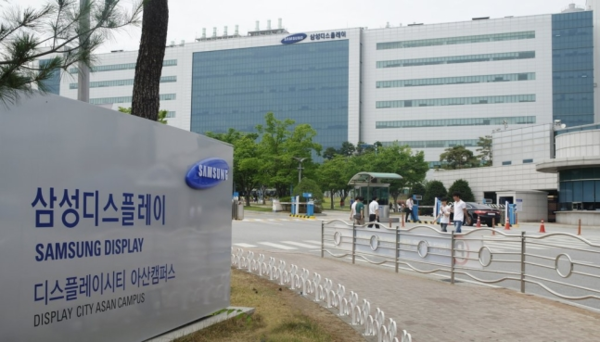Input 2021.02.18 06:00
Samsung·LG, 85% of small and medium-sized OLED market share
China begins to pursue OLED after LCD
Concerns about “taking capital out of manpower”

The problem is that China, which took the lead in the LCD market, is turning back to the OLED market. Chinese companies are making aggressive investments, such as promoting the establishment of large-scale production lines. For this reason, it is pointed out that it is necessary to prepare for the outflow of key manpower in China, which is based on huge capital power.
According to market research company Omdia on the 18th, Samsung Display, LG Display (034220)Etc., the share of domestic companies was calculated at 84.9%. The market share of the 9-inch or larger OLED market is more dominant with 98.1%.
This is the result of the domestic industry’s efforts to switch to OLED to replace LCD. Since 2019, OLED has surpassed LCD in domestic display exports. According to the Ministry of Trade, Industry and Energy, LCD exports in 2018 were $13.6 billion, more than OLED ($10.3 billion), but in 2019, OLED sold $1.25 billion, exceeding LCD ($7.93 billion). Last year, OLED recorded 10.91 billion dollars, further widening the gap with LCD (6.12 billion dollars).

Unlike LCD panels, OLEDs do not need a backlight. In addition to being thin and light, it has excellent color reproduction and quick response. The market size was small due to the high price, but the related market is growing as it is applied to premium smartphones and TVs recently.
Domestic display companies focused on OLED with half of their own. When Chinese companies, which received enormous government subsidies, entered the LCD market offensive, they developed OLEDs and preoccupied the market in the early 2010s. According to the Korean Intellectual Property Office, patent applications in the field of domestic OLED materials steadily increased by 5% per year on average. By company, LG affiliates are the largest, followed by Samsung affiliates.
Chinese display companies have started pursuing in OLED following LCD. BOE, which ranked No. 1 in the LCD market, is developing technology with the support of OLED from the Chinese government recently. It also passed Apple’s quality inspection last year. It has been 4 years since it entered the smartphone OLED market. In addition, most major Chinese companies such as CSOT, Tianma, and HKC are aggressively investing in OLED. Currently, there are about 20 OLED production lines under construction or planning in China.
The domestic display industry is in a position to take a life and death in protecting’manpower’. The Chinese industry is offering a two to three-fold higher annual salary to recruit talent. Recently, a domestic headhunting company announced that it is looking for an OLED expert to work in a Chinese company. It is known that it not only provided a company house, but also offered an annual salary of ‘100 million units’.
The government is managing OLED as a national core technology. If related technologies are leaked abroad, they will be sentenced to three years or more in prison according to the’Act on the Prevention and Protection of Industrial Technology Leakage’. An official in the display industry said, “The manpower of Chinese companies is subtracted from the portal, but it is difficult to grasp as it is also being done through social media (SNS).”
